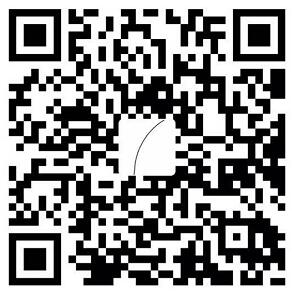Introduction
In this final part of the series we are going to cover some basic administrative tasks that an MDaemon administrator should know how to do in their new Exchange Server 2007 environment. I selected some tasks that can help the new administrator to perform their daily tasks routine.
Managing protocols at User level
Using MDaemon, an administrator can double-click on the user and then General tab. An MDaemon administrator is able to manage which protocols that specific user is able to connect on the MDaemon server. The available options on the General tab are; POP, IMAP and Outlook Connector (Figure 1). The tab “Web” allows you to configure access to the webmail interface, as shown in Figure 2.

Figure 1

Figure 2
In Exchange Server 2007, we can use Exchange Management Console and perform these following steps:
-
Open Exchange Management Console
-
Expand Recipient Configuration
-
Click on Mailbox item
-
Double-click on the designated user
-
Click on Mailbox Features, as shown in Figure 3, and you will be able to disable several protocols from the user, such as: OWA, ActiveSync, UM, MAPI, POP3 and/or IMAP4.

Figure 3
Creating an alternate SMTP address
Using MDaemon, an administrator can create an alias and associate it to a mailbox, from there, the mailbox will start receiving messages that are addressed to the alias as well, as shown in Figure 4.

Figure 4
Using Exchange Server 2007 is a little bit different. One mailbox can have multiple e-mail address associated to it and any message addressed to those addresses will be delivered in the same mailbox. In order to add an extra SMTP Address to a user the following steps can be done:
-
Open Exchange Management Console
-
Expand Recipient Configuration
-
Click on Mailbox item
-
Double-click on the designated user
-
Click on E-mail Addresses tab, and click on Add button. In the Figure 5, I am adding the SMTP address andy@andersonpatricio.org to the existent mailbox.

Figure 5
Note #1:
Only one entry from that list can be configured as Set a Reply and the accounts’ SMTP Address will be stamped in any message sent from that mailbox. Natively, the end-user cannot switch over their own e-mail address to send a message, they are able to receive messages addressed to any address of that list but when they send a message the replay address will be always the SMTP configured as Set as Reply.
Note #2:
If you need more than one user receiving messages addressed to an SMTP address, you should consider creating a Mail-Enabled group and adding all accounts that should receive a message into that group.
Full Access permissions
Using MDaemon an administrator can define permissions on the Inbox folder on the user’s properties, as shown in Figure 6.

Figure 6
Using Exchange Server 2007, we can define Full Access permissions at mailbox level and the user that is defined in the Full Access Permissions wizard will be able to access the entire content of the mailbox through Outlook or Outlook Web Access, as shown in Figure 7. In order to configure using Exchange Management Console, open it, expand Recipient Configuration, click on Mailbox and select the user. In the Toolbox Actions there is an option calledManage Full Access Permissions.

Figure 7
There is also a client side option where a user using Outlook can right-click on any folder and click on Permissions tab. Then, the user can assign users from the Global Address List and define level of access for that specific user.
The user that has received the permission can open Outlook, click on File, Open, and then on Open Other User’s folder item, pick it up the username from the Global Address List and select which default folder he wants to connect and click on OK.
Forwarding e-mail
Exchange 2007 allows an administrator to forward mail traffic to a mailbox, Mail-Enabled group or contact. The administrator can also configure if it is going to be just a forward or if the incoming messages will be delivered on both places (mailbox and forward object). In order to configure the forward settings, these steps can be followed:
-
Open Exchange Management Console
-
Expand Recipient Configuration
-
Click on Mailbox item
-
Double-click on the designated user
-
Click on Mailbox Flow tab and double-click on Delivery Options (Figure 08)
-
Check the option Forward to and select a mail enabled object from the list, to bring it up the available entries, click on Browse button.

Figure 8
Note:
Exchange Server allows a single entry on the forward field, if more than one entry is required, you should consider using a Mail-Enabled group instead.
Creating a group containing All Users from your organization
A common question that may come up in your first days of Exchange Server 2007 administration is how to create a group that contains all users from your organization. You can create a group like that in two different ways: create a normal group and add all users which require manual labour afterwards to keep that group update or using Dynamic Distribution Groups. In order to create a dynamic distribution group that does not require manual updates later on, we can follow these steps:
-
Open Exchange Management Console
-
Expand Recipient Configuration
-
Click on Distribution Group
-
Click on New Dynamic Distribution Group
-
On the Introduction page, choose the Organization Unit where this group will be created, and define name and alias for this new group, then click Next
-
On the Filter Settings: Select the recipient container, in our case let us select the domain root item, enable the option Users with Exchange Mailboxes options and click on Next. (Figure 9)

Figure 9
-
Leave the default settings and finish the wizard
Now, we can go to Global Address list and we will be able to see the group that we have just created.
Hiding a user from the Address List
Using MDaemon a user can be easily removed from the Address List through the option Hide account from calendar, ‘Everyone’ list, and VRFY results, as shown in Figure 10.

Figure 10
To do the same process in Exchange Server 2007, we need to double-click on the designated user and check the option Hide from Exchange address list, as shown in Figure 11.

Figure 11
Exchange Management Shell cmdlets
We have been working on Exchange Management Console so far, but Exchange Server can be managed through Exchange Management Shell. The following table can help you out to remember which cmdlet can be used to configure the same previous configurations that we have just done.
| Task | Exchange Management Shell cmdlet | Most likely attributes that will be used |
| Create a new user | New-Mailbox | |
| Disable mailbox features | Set-CASMailbox | POPEnabled, IMAPEnabled, MAPIEnabled, OWAEnabled and ActiveSyncEnabled |
| Full Access Permission | Add-MailboxPermission | AccessRights |
| Hide from Address List | Set-Mailbox | HiddenFromAddressListsEnabled |
| Forward mail | Set-Mailbox | ForwardingAddress |
| Dynamic Distribution Groups | New-DynamicDistributionGroup |
Conclusion
In this final article we demonstrated some manage tasks that an MDaemon Administrator should know in order to manage his new Exchange Server 2007 after a migration.
 席天卷地个人博客
席天卷地个人博客


评论前必须登录!
注册